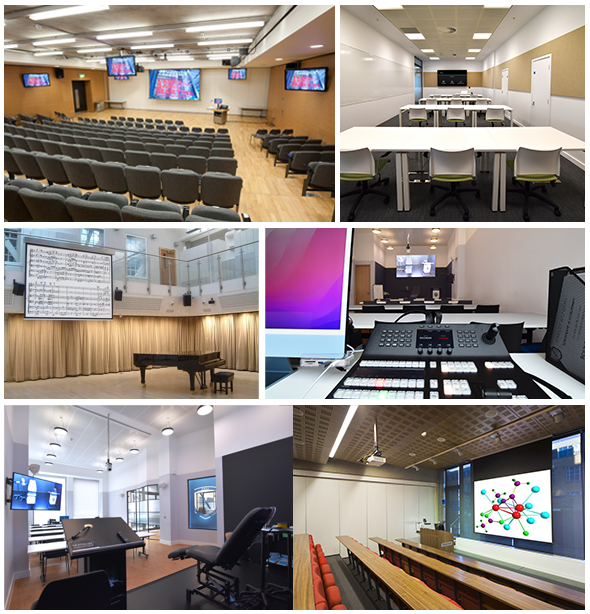
What is Education Technology?
Education technology refers to the systems and solutions used by educational establishments to enhance the learning process of students and improve the working life of faculty. The education landscape is constantly evolving, and this is very evident in the technology used to support education needs. From writeable video walls to projection collaboration tools to specific educational applications – the variety and complexity of solutions are boundless. We can help you understand which solutions and systems will deliver the learning outcomes you want for the budget you have. The benefits are very real:
1) Student Learning Experience
As the human brain processes images 60,000 times faster than text, it makes sense to employ systems which can deliver excellent visual and interactive content such as video walls and displays. These make it easier for students to remember, understand and contribute which improves their overall experience.
2) Connectivity and Community Building
A recent survey on students in the US in higher education showed technologies which enable connectivity and community building, such as social media–inspired discussion platforms and virtual study groups have increased in use by 49%. Online course communities effectively improve students’ access to help and support from their peers and faculty staff. This sense of community helps students achieve better results and stick to the course.
3) Group Work
The survey also showed use of group work tools grew by 29%, with educational establishments rethinking how they teach moving forward and embracing the advantages brought by hybrid working. Group work and knowledge sharing is enhanced when it is possible to collaborate virtually as well as in person. Multi-touch collaboration systems are excellent for allowing virtual and in person collaboration and interaction. Group work tools boost lecture attendance, results and the community feel which is important within learning environments.
4) Classroom Exercises and Interactions
From learning games to polls and chats, having a wider range of technical resources to hand allows the teacher/lecturer more opportunity to engage with students and deliver more impactful content. A recent survey showed 80% of students saying all the classroom exercises and AI teaching aids have improved their learning and grades.
When online chats are used in conjunction with live streamed lectures/classes, students can attend and collaborate meaningfully, even if they are not in situ. The session can also be recorded for future review. This greatly benefits students who have a disability or illness which prevents them from attending regularly in person. This option can also drive revenue as the University, College or Academy can offer remote lectures to cater to a wider audience.
5) Progress Monitoring and Alignment
Learning games and online testing can give a quick and automatic insight into a student’s progress, clearly highlight any knowledge gaps for both students and lecturers. The use of AI-powered tools is on the increase. Set up correctly, these tools allow staff to tailor courses to each student’s progress, reduce their workload, and improve student engagement at scale.
Upskilling – Technology use in higher education is particularly buoyant, and education establishments are building provisions around technology. However, this requires upskilling and ongoing learning for faculty staff. We can help with this too. We work hard to ensure we have strong relationships with suppliers. This keeps us ahead of the latest technology and allows us to deliver in-house or remote training courses as needed.
If you would like to talk to one of our experts about Education Technology or arrange a course, you can contact us here.


